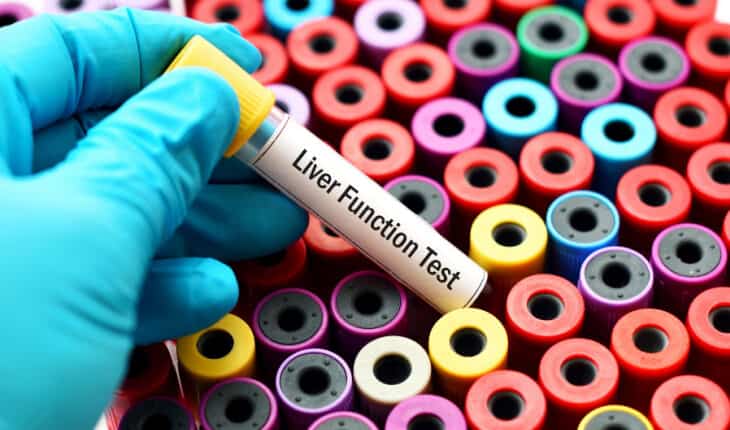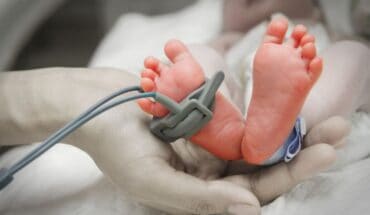NAFLD: How to Diagnose and Prevent Non-Alcoholic Fatty Liver Disease: Non-Alcoholic Fatty Liver Disease is a disease that affects the liver cells and causes a build-up of fats that could potentially lead to liver failure.
Alcoholic Fatty Liver Disease is a different liver condition from NAFLD and is caused by excessive drinking of alcohol.
NAFLD is a broad term for a range of liver conditions usually diagnosed in obese or overweight people. In the early stages, non-alcoholic fatty liver disease doesn’t usually lead to any serious liver damage. However, if left untreated, it can cause life-threatening conditions, including liver failure.
If the levels of fats are high in the liver, you should contact a healthcare provider and discuss the potential treatment and prevention of further progression of the disease.
So, how can you diagnose and prevent NAFLD? Learn this and much more below.
NAFLD
The buildup of fats in the liver is not caused by excessive alcohol consumption. Instead, a range of additional conditions are related to its development. According to experts, 24% of the adult US population is affected by NAFLD, and up to 6.5% will develop NASH – Non-Alcoholic Steatohepatitis.
NAFLD is commonly diagnosed in people with type 2 diabetes, severe obesity, or certain genetic conditions. Experts believe that genes play a crucial role in the development of NAFLD in particular racial and ethnic communities.
Diagnosis
The NAFLD diagnosis can be performed through various tests, including a liver blood test, functionality tests, enzyme tests, and others.
When a liver function test is carried out, it usually produces an abnormal result which can aid in diagnosing liver issues like hepatitis, cirrhosis, and inflammation. Since not all blood tests can pick up NAFLD, an ultrasound is almost always recommended.
Imaging Diagnostic Methods
Ultrasound of the abdomen is a scan that creates an internal image of the body. It helps detect inflammation, the buildup of fats, or liver injury.
Another diagnostic method is a biopsy. If the patient is diagnosed with NAFLD, further tests might be recommended, such as a biopsy. It’s a procedure where a small sample of liver tissue is taken to be further examined in a lab. A biopsy can be uncomfortable for the patient, and it comes with minor risks. You should discuss the procedure in detail with your doctor to understand its risks and benefits.
Additional diagnostic methods include an MRI scan and a CT scan.
CT (Computerized Tomography) is a scanning technique that makes a clear distinction between NAFLD and NASH.
Transient Elastography measures liver stiffness and helps in the diagnosis of fibrosis.
Magnetic Resonance Elastography combines an elastogram (visual map) with an MRI procedure to diagnose tissue stiffness as well. The healthcare provider will determine which diagnostic method is better for diagnosing MRI.
The Stages of NAFLD
Non-Alcoholic Fatty Liver Disease develops in four stages. Most people will develop only the first stage, and the disease will go unnoticed since there are usually no noticeable symptoms. However, in some instances, the disease can progress, eventually leading to liver damage and failure. Here are the four main stages:
- Steatosis – also known as Simple Fatty Liver – is a condition that causes a harmless build-up of fats in the liver. It can be diagnosed when other tests are carried out.
- NASH – Non-Alcoholic Steatohepatitis – is a condition where the liver becomes inflamed. It’s a more serious form of NAFLD;
- Fibrosis – scar tissue forms around the affected liver cells and can even reach the surrounding blood vessels;
- Cirrhosis – the last stage of NAFLD that displays signs of inflammation; the liver can become scarred and lumpy due to years of inflammation, and it can lead to permanent liver damage, failure, or even cancer in the most severe cases
Prevention
Since it can take years for the liver to be severely damaged and eventually stop working, it’s important to make crucial lifestyle changes and prevent the condition from progressing further. Healthcare providers recommend obese and overweight patients lose weight and aim for a BMI between 18.5 and 24.9 to prevent the liver from developing the latter stages of the disease.
Eating a healthy diet is the first step toward keeping the liver healthier because a balanced diet of vegetables, fruits, carbs, and proteins can significantly help in the prevention of liver diseases.
Make sure you stay hydrated and exercise regularly. Stop smoking (if you smoke) to reduce the risk of heart attacks and strokes.
Stay healthy!
People with NAFLD are at increased risk of developing additional health problems like metabolic syndrome, cardiovascular diseases, high blood pressure, and high levels of triglycerides and cholesterol. So, to stay healthy, it’s important to go on regular checkups and keep your liver healthy. Also, don’t forget to have a balanced diet and drink plenty of water.
- World-first breakthrough for bowel cancer immunotherapy - 24th October 2025
- The future of sepsis research - 24th October 2025
- Unpaid carers working longer hours - 24th October 2025







